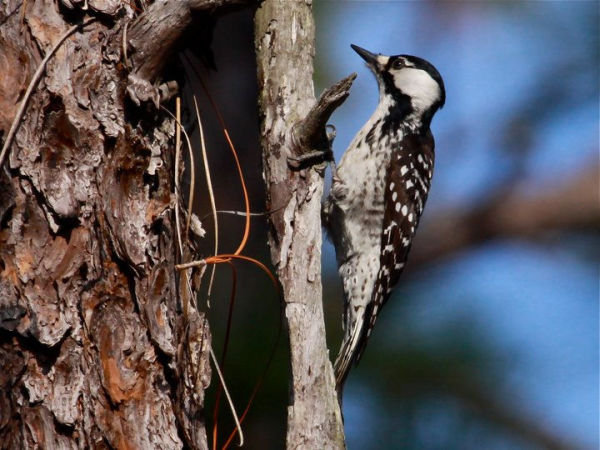
This is not your average woodpecker. It’s an endangered red-cockaded woodpecker.
Though he resembles a downy or hairy woodpecker, a close inspection shows how different he is. His wings and flanks are spotted instead of striped and he has a large white cheek patch instead of a black face with an eyebrow stripe. The cheek patch is the big clue.
He’s called “red cockaded” because the males have a tiny red stripe at the black-white border behind their eyes but this stripe is not always visible — and the ladies don’t have it at all — so you can’t use it as an easy field mark.
Red-cockaded woopeckers require open stands of mature southern pine forests for their livelihood. They hammer a nest hole in longleaf pines with softened heartwood and the trees ooze resin around the opening that protects the nest with a sticky goo. This also makes the woodpecker’s nest easy for birders to see.
Much of the red-cockaded woodpecker’s habitat has been chopped down to create commercial forests, the mono-cultures of soft pine that become wood or paper. That habitat doesn’t work for this bird so if you want to find him you’ll have to visit a southern National Forest. This one was photographed by Chuck Tague in the Ocala National Forest in Florida.
(photo by Chuck Tague)
It’s so sad to see any species on the endangered list, but I’m particularly sad about this one because I’ve really been focusing and enjoying the woodpeckers we have in the Northeast: Hairy, Downy, Red-bellied, and my favorite, the Pileated. I’ve not seen a Red-headed yet, but I’m constantly looking for him. Woodpeckers have so many fascinating characteristics that differentiates them from other birds. I truly hope conservation efforts are successful for this unique species!